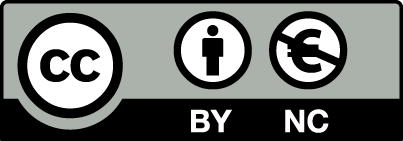Please use this identifier to cite or link to this item:
https://hdl.handle.net/10419/185677 Authors:
Year of Publication:
2018
Citation:
[Journal:] International Journal of Business and Economic Sciences Applied Research (IJBESAR) [ISSN:] 2408-0101 [Volume:] 11 [Issue:] 1 [Publisher:] Eastern Macedonia and Thrace Institute of Technology [Place:] Kavala [Year:] 2018 [Pages:] 13-25
Publisher:
Eastern Macedonia and Thrace Institute of Technology, Kavala
Abstract:
Purpose: The purpose of this study is to illustrate how innovative and creative companies develop products and services at the bottom of the economic pyramid (B.o.P) markets. This paper attempts to gain further insight regarding the usage of the 4A perspective developed by Anderson and Billou (2007) and the Triple Bottom Line (TBL) framework developed by Elkington (1999) as guidelines to achieve success in BoP markets. Design/methodology/approach: The authors of this paper come from three different countries (Sweden, Norway and Belgium), which gave a possibility to gather qualitative data from companies located or founded in these three countries. The 4A's perspective and the TBL framework is used as a theoretical foundation to further investigate the phenomenon regarding how western companies act on B.o.P markets. Thus, this paper attempts to answer the following research questions: How can (social) entrepreneurs (or any companies) adapt the 4A perspective to introduce disruptive innovations and still, with the help from the TBL framework, maintain their sustainable, responsible and ethical approach? Additionally, how can the mind-set of innovation and creativity at the bottom of the pyramid in developing markets be transferred to social entrepreneurs in developed markets? Primary data was gathered through interviews with Solvatten (Sweden), MicroStart (Belgium) and Easypaisa (Norway). Findings: The 4A perspective was proven to be an effective tool while approaching B.o.P markets. Companies must think outside the box of traditional marketing and be creative, to achieve their goals. In dynamic markets, a company will struggle to keep up with all constraints. The case companies struggled most with acting sustainably while achieving profitability. Research limitations/implications: To further validate the results, the sample size should be bigger including several different companies and informants. Originality/value: This paper contributes to the literature of the already-established 4A perspective and the TBL framework by providing in-depth research, by investigating companies and their operations from three different countries (Sweden, Norway and Belgium). To our knowledge no prior case studies have been conducted in these countries.
Subjects:
Bottom of the Pyramid (B.o.P)
4A perspective
Triple Bottom Line (TBL)
disruptive innovations
creativity
Solvatten
MicroStart
Easypaisa
4A perspective
Triple Bottom Line (TBL)
disruptive innovations
creativity
Solvatten
MicroStart
Easypaisa
JEL:
C32
E52
E58
E52
E58
Persistent Identifier of the first edition:
Document Type:
Article
Files in This Item:
File
Description
Size
Format
Items in EconStor are protected by copyright, with all rights reserved, unless otherwise indicated.

